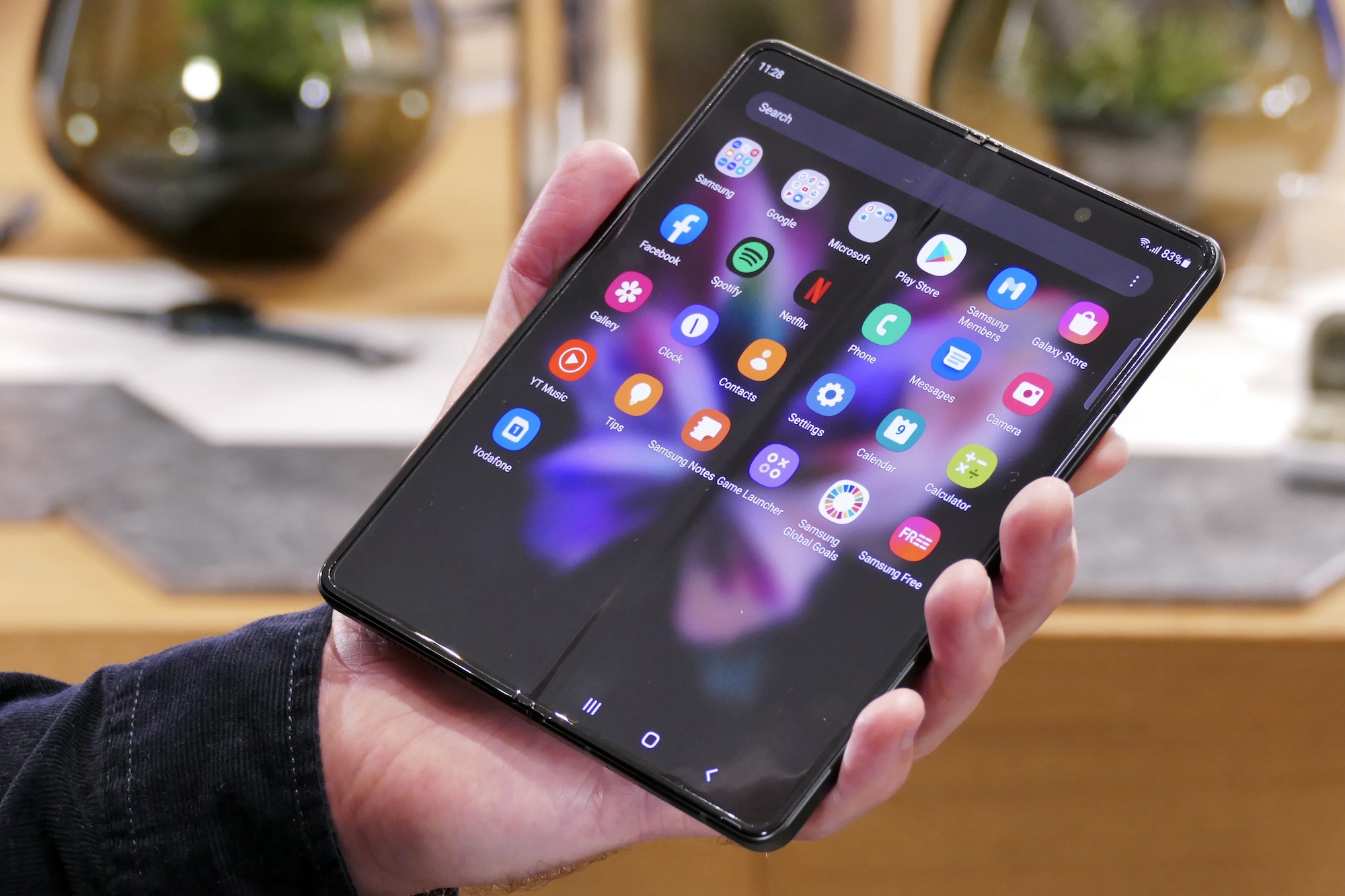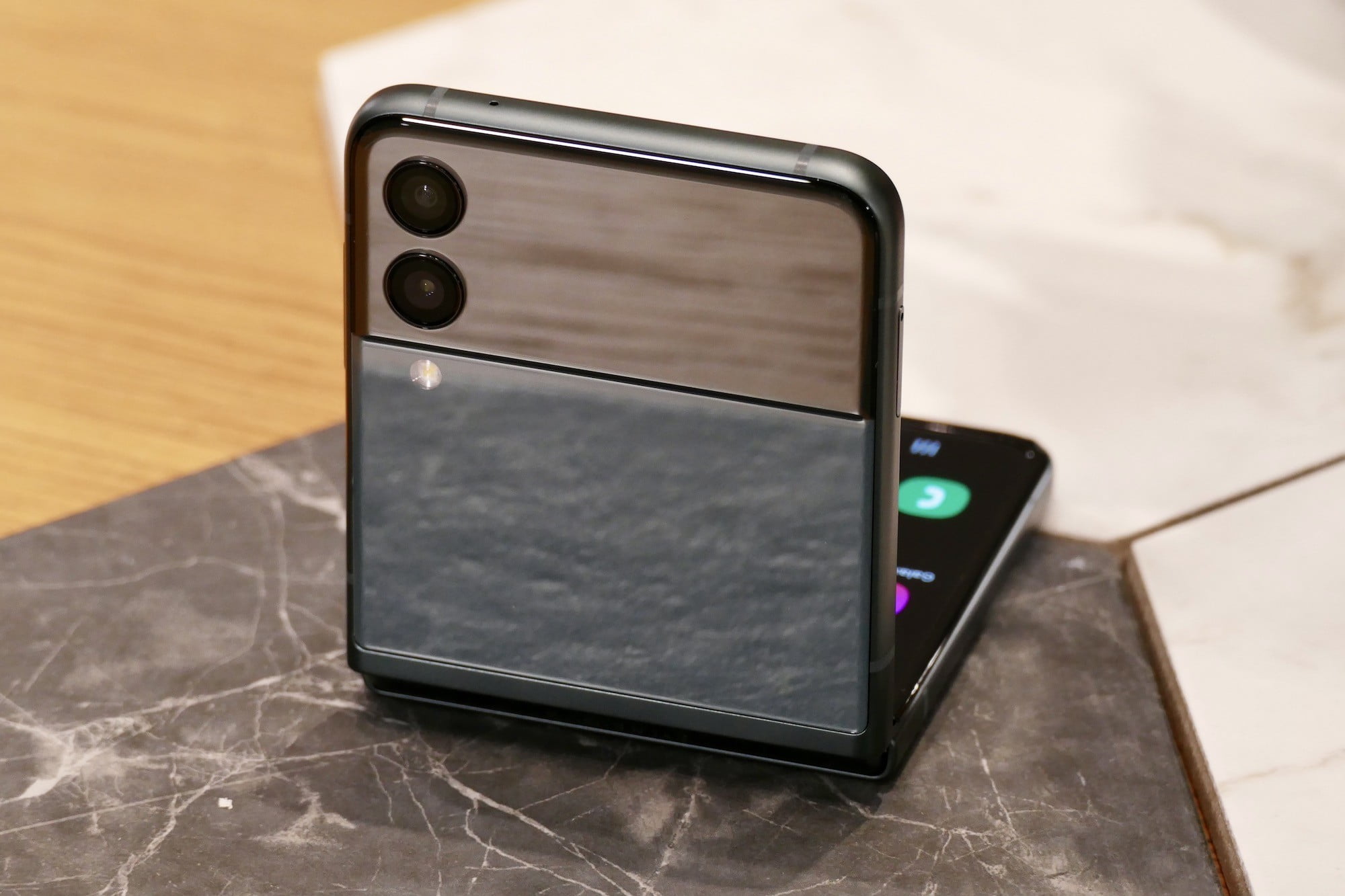“Our new foldable products are about bringing the Galaxy Z series to the mass market,” Nick Porter, Vice President of Product Management and Commercial Operations at Samsung U.K. and Ireland, told me during an online interview ahead of the Galaxy Z Fold 3 and Z Flip 3’s launch.

Could it be true? Have folding smartphones, and crucially the prices that will make them accessible to more people, really reached mass appeal status, or is this sales-boosting bluster from a company that practically stands alone in making folding smartphones at the moment?
What are the criteria?
“We think [the Galaxy Fold series] is now ready,” Porter continued. “We really listened [to consumers] as we went about building, developing, and designing these new devices. The top three requests that we had, for the Galaxy Z Fold, in particular, were around waterproofing, S Pen support, and to make the device lighter and slimmer.”

Samsung has put a big tick next to all these points for the Galaxy Z Fold 3.
“Because of that, what we’ve done is put in place an IP rating, so it’s the first foldable smartphone with one, added the S Pen, which so many have asked us to do, and of course making it lighter and slimmer.”
These are crucial elements in making folding smartphones more viable daily-use options for more people, but they only tell part of the story. You have to look a little more closely to see where Samsung has really advanced the new folding models, to both subtly and more obviously increase appeal.
Durability
One of the most often heard fears about using a folding smartphone on a daily basis was about it breaking. The fate of early Galaxy Fold models in the hands of reviewers didn’t help concerns over long-term durability either. Samsung has not only added the IPX8 water resistance rating but also made the body of both phones out of a new aluminum that’s 10% more durable to resist scratches and deformation. It says the so-called Armor Aluminum is the strongest material ever used on a smartphone. Additionally, Samsung has used folding Gorilla Glass Victus over the screen along with a protective film that’s 80% more durable than before.

It’s definitely an improvement over the old models, which didn’t have any IP rating or additional durability at all. However, don’t confuse IPX8 with the IP68 rating seen on Samsung’s non-folding phones like the Galaxy S21 Ultra. The X refers to the phone not being tested for dust or particle ingress, meaning that while the new Z Fold 3 and Z Flip 3 phones are rated for water protection down to a depth of 1.5 meters, they are still potentially susceptible to dust.
Handling the Z Fold 3, the weight saving over the Galaxy Fold and Z Fold 2 is clear, although the actual numbers are quite small. The Z Fold 3 is 271 grams, with a 16mm/14.4mm thickness when folded, and 6.4mm thick unfolded. The Z Fold 2 was 282 grams, with a 16.8mm/13.8mm folded thickness, and 6.9mm unfolded. What’s impressive is the IPX8 rating and the new stronger aluminum has not increased size or weight, but reduced it.

Despite being reworked for the IPX8 rating with an anti-corrosion treatment and a special lubricant to resist rust in conditions where it could get wet, the Z Fold 3’s hinge retains the wonderful, dampened motion of the Z Fold 2, although the snap-close motion of the Galaxy Fold has been consigned to the foldable history books. No smartphone is invulnerable to harm, and although by its very design a folding smartphone will always be less durable than its fixed counterparts, Samsung has significantly closed the gap with the Z Fold 3 and Z Flip 3, while still advancing the usability with a lighter body.
S Pen, and the Galaxy Note
The S Pen has arrived on the folding smartphone, with both models being compatible with a special S Pen Fold Edition stylus, and the Bluetooth-equipped S Pen Pro. This is the same system Samsung introduced for the S Pen on the Galaxy S21 Ultra. The S Pen stylus doesn’t disappear inside the Z Fold 3’s body though, and will instead have to be stored in a special case if you want to carry it around all the time.
Porter told me he considered the Galaxy Z Fold 3 an “evolution of the Galaxy Note,” and that through bringing the key Galaxy Note experience into it, it would help make the Z Fold 3 more mainstream. People also buy the Note and Fold for similar reasons. Multi-tasking and productivity have always been a mainstay of the Galaxy Note series, and 79% of Fold owners make use of its ability to view and use multiple apps, emphasizing the crossover.
The big-screen Galaxy Note took a few generations to be considered a mainstream device, but today it’s almost standard to have a 6.5-inch or larger screen on a top smartphone. The Z Fold 3 is now the device in Samsung’s range that offers a truly big-screen mobile experience, and by adding the S Pen, along with optimizations for multi-tasking on the phone, plus partnerships with Microsoft, Google, Spotify, and others to make apps work seamlessly across the phone’s screens, it’s closer than ever before to replicating the much-loved Note.
Porter said he hopes the advancements and increased appeal of the new models will help, “bring Note users along” with the Z Fold’s push into the mainstream. To help do so, in the U.S. Verizon will offer a free Fold Cover and S Pen as a bundle with the Z Fold 5G, and a similar Starter Pack will be available with the phone in the U.K. too.
Fashion-forward
“One Fold size doesn’t fit everybody,” Porter pointed out, referring to the way the Z Flip 3 blends fashion and productivity, while the larger Z Fold 3 is far more about productivity on its own. The Z Flip 3 is practically the same size and weight as the Z Flip and opens to reveal a 6.7-inch screen. The cover screen is larger, and I love the way it can show the same face as a connected Galaxy Watch 4, bringing a lovely design cohesion that’s not often there between smartphone and smartwatch.
There are seven colors available, with gray, white, and pink being Samsung online exclusives, compared to the three, more business-like colors of the Galaxy Z Fold 3. Unfortunately, there doesn’t seem to be the option to customize the phone’s color scheme, like the Z Fold 2, however, designer Thom Browne has once again returned to make special editions of both models.
Just like it has done with the new Galaxy Watch 4, Samsung has built plenty of choices into its folding smartphone range. Two distinctly different smartphones but mostly with the same features, more colors than before, and a collector’s edition for those who want just that little more exclusivity. Greater choice means more chances to appeal to more people, something Samsung understands because it already demonstrates it throughout its extensive phone range.
Are the lower prices low enough?
More durable, more powerful, more usable, and with more choice means the Z Fold 3 and Z Flip 3 are definitely closer to mass market, mainstream appeal than any folding smartphone before them. But none of this will matter if they still cost the same as a decent-but-cheap used car. The prices are lower than before, but are they low enough to qualify as “mass market?”

The Z Fold 3 starts at $1,799 or 1,599 British pounds, while the Z Flip 3 starts at $999 or 949 pounds. The prices are representative of the technology, and it’s still a while before they will reach a level similar to the S21 Ultra for example. However, they’re getting closer, and the Z Flip 3 is definitely affordable at under the crucial $1,000 mark. Samsung is also promising additional trade-in deals to make the high prices less of a blow.
“We’ve always led the way as Samsung, and we think now is the right time for these products to be going to the mass market,” Porter said. While the price is still a tough ask for the top model, it’s hard to argue against this statement when you look at the thought put into the specification, build, and downright coolness of Samsung’s latest folding smartphones.









